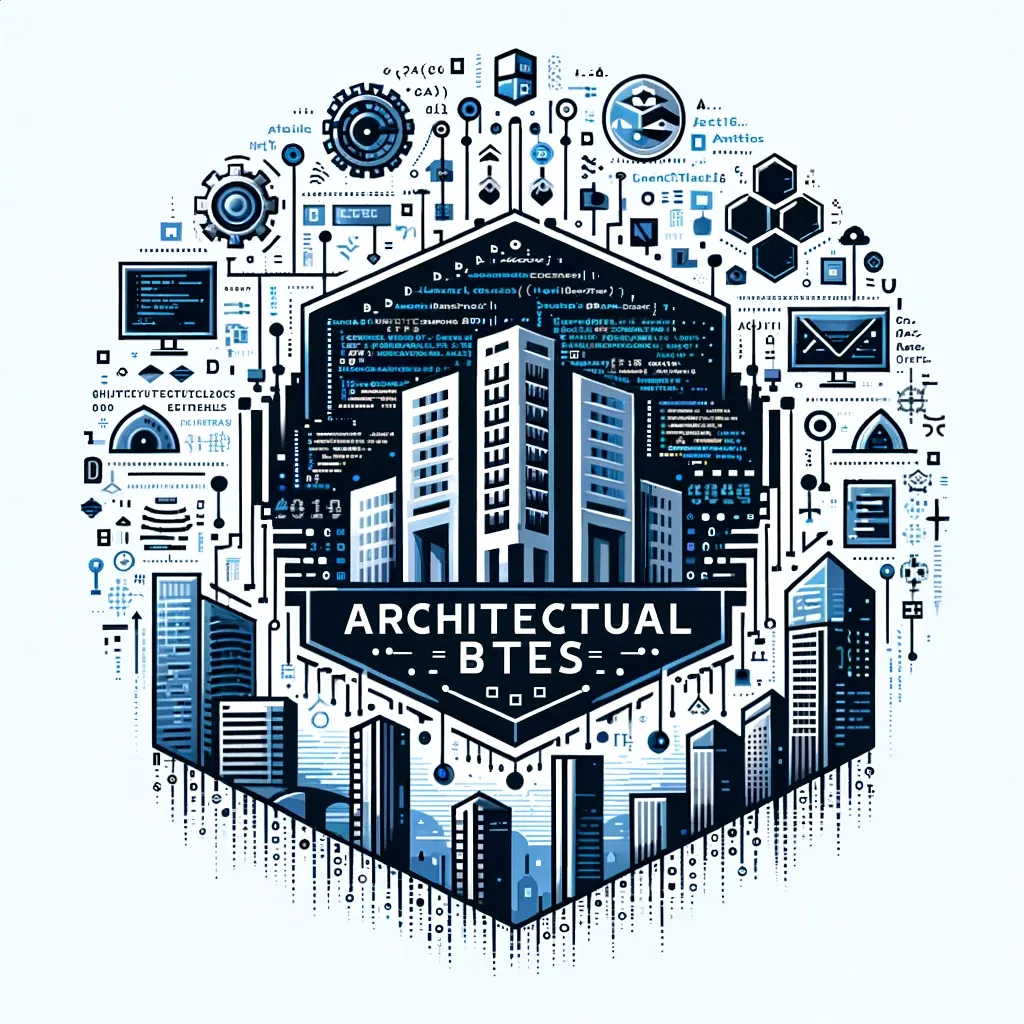Embracing the Future: The Role of SaaS in Modern Software Architecture

In the constantly evolving realm of technology, Software as a Service (SaaS) has established itself as a key player, revolutionising the manner in which software is delivered and utilised. This shift transcends mere changes in software access or payment models; it signifies a fundamental transformation in the very architecture of software. The industry has progressed from the traditional days of on-premise installations and physical software products to a more dynamic, service-orientated approach, where software is not just a static product but a continuously evolving service.
At the core of this transformation is the fundamental concept of SaaS - a software distribution model in which applications are hosted by a third-party provider and made accessible to customers via the internet. This model has not only rendered software more accessible but has also heralded a new paradigm in software architecture, emphasising scalability, flexibility, and ongoing improvement.
The significance of SaaS in the contemporary software architecture landscape is immense. It represents not just a passing trend, but a profound shift in the way businesses and consumers engage with technology. This blog post aims to delve into the intricacies of SaaS, examining its influence on software architecture, the advantages it offers, the challenges it presents, and the future it is moulding. Understanding SaaS provides us with crucial insights into the future of software development and the architectural considerations that are shaping tomorrow's technology landscape.
Understanding SaaS in Software Architecture
Software as a Service, more commonly referred to as SaaS, marks a significant departure in the manner in which software is delivered and utilised. At its heart, SaaS is a distribution model wherein applications are hosted remotely, usually in the cloud, and made accessible to users via the internet. This approach is markedly different from the conventional methods of software delivery, which involved installing and running applications on the user's own hardware.
A key architectural distinction between SaaS and traditional software models is observed in the management and maintenance of the software. In the traditional framework, the onus of maintaining and updating software falls on individual users, leading to a disjointed landscape with users potentially operating different versions of the same product. Conversely, SaaS centralises this management, facilitating consistent updates, security enhancements, and the introduction of new features. This not only guarantees that all users have access to the latest capabilities but also markedly lessens the burden of software maintenance for the users.
The intrinsic link between SaaS and cloud computing is another critical element. The cloud forms the backbone of the SaaS model, supplying the essential infrastructure, scalability, and reliability. This dependence on cloud computing implies that SaaS applications are inherently designed to be scalable, capable of serving a small number of users or effortlessly expanding to cater to thousands, without substantial modifications to their foundational architecture.
Furthermore, the SaaS model fosters a more user-centric approach to software design. Given that SaaS applications are available over the internet, they are crafted with an emphasis on ease of use, compatibility across different platforms, and overall user experience. This focus often results in applications that are more intuitive, responsive, and adaptable, accessible from any location, thereby enhancing user engagement and satisfaction.
In summary, the advent of SaaS has necessitated a reevaluation of software architecture. The emphasis has shifted from the creation of standalone, monolithic applications to the development of flexible, scalable, and continually evolving services. This change is not merely technical but also philosophical, altering the perceptions of developers, businesses, and users about software. As we delve into the advantages and challenges of this model in the forthcoming sections, it becomes evident that SaaS is not only transforming software architecture but also redefining the wider technological and business landscapes.
Benefits of SaaS in Software Development
The widespread adoption of Software as a Service (SaaS) has ushered in a plethora of advantages, fundamentally transforming the software development landscape. Chief among these advantages is cost-effectiveness. SaaS models usually adopt a subscription-based pricing strategy, markedly reducing the barrier to entry for software utilisation. This is in stark contrast to the substantial upfront costs typically associated with traditional software purchases and installations. For businesses, particularly small to medium-sized enterprises, this equates to access to advanced software solutions without necessitating a hefty initial outlay on licences and infrastructure.
A further critical benefit of SaaS is its inherent scalability. SaaS applications are inherently designed to scale with ease, either up or down, in response to user demand. This adaptability enables businesses to tailor their software usage and expenditure to their current requirements, free from concerns about server capacity or software updates. Such scalability is more than a mere technical feature; it signifies a shift in the way companies can expand their operations, offering a level of agility previously difficult to attain.
Another cornerstone of the SaaS model is the continuous updates and maintenance. Unlike traditional software, which might necessitate manual updates and patches, SaaS applications are routinely updated by the service provider. This guarantees that all users consistently have the most current version of the software, complete with the latest features and security enhancements as soon as they're available. For businesses, this means a lighter IT workload and the confidence that their software remains current and secure.
Accessibility is yet another significant advantage. SaaS applications are typically accessed via web browsers or lightweight client applications, rendering them platform-independent and accessible from any location with an internet connection. This greatly facilitates remote work and collaboration, enabling teams to work together in real-time, regardless of their geographical location. The value of this feature was particularly underscored during the COVID-19 pandemic, as organisations reliant on SaaS-based tools were able to more swiftly transition to remote working arrangements.
Additionally, SaaS fosters a more collaborative and integrated approach to software utilisation. Many SaaS applications include built-in collaboration tools and support integration with other services and platforms. Such interoperability is essential in today’s interconnected digital realm, where the ability to seamlessly link various tools and data sources can markedly enhance productivity and innovation.
In conclusion, the benefits of SaaS in the realm of software development transcend simple technical advantages. They represent a shift towards more flexible, cost-effective, and collaborative methods of software usage, empowering businesses to be more agile, resilient, and competitive in an ever-evolving digital landscape.
SaaS Impact on Software Architecture Trends
The rise and widespread acceptance of Software as a Service (SaaS) has profoundly influenced trends in software architecture. A key development in this arena has been the advent of microservices architecture. This approach constructs applications as a suite of small, independent services, each operating in its own process and communicating via lightweight methods. This stands in sharp contrast to the traditional, monolithic architecture, where an application's components are tightly woven together and deployed as one entity. Microservices have shown themselves to be particularly apt for SaaS applications, thanks to their scalability, versatility, and the simplicity with which they can be updated and maintained.
Another trend shaped by the proliferation of SaaS is the growing dependence on API-driven architecture. Application Programming Interfaces (APIs) have become fundamental to SaaS applications, facilitating seamless interaction with other applications and services. This interoperability is key to forging an ecosystem where SaaS applications can effortlessly integrate with external services and platforms, thus offering users a more comprehensive and cohesive experience.
Insightful illustrations of these architectural strategies can be found in case studies of successful SaaS ventures. Firms like Salesforce, Shopify, and Slack have not only embraced SaaS but also represent the architectural evolution it demands. Their success stories highlight the criticality of adopting architectures that underpin continuous delivery, scalability, and integration within a SaaS framework.
The move towards serverless architectures is another emerging trend within the context of SaaS. Serverless computing enables developers to create and operate applications without the need to manage servers. This model aligns seamlessly with the SaaS ethos of concentrating on the application rather than the underlying infrastructure. It allows developers to focus on coding and feature development, while the cloud provider oversees the servers, storage, and network infrastructure.
Moreover, SaaS has necessitated a rethinking of security architectures. Considering that SaaS applications are accessed via the internet and handle sensitive data, the implementation of stringent security measures is crucial. This has led to the development of more sophisticated security protocols and practices within SaaS architectures, encompassing end-to-end encryption, regular security audits, and adherence to international data protection standards.
In summary, SaaS has been more than just an agent of change in software architecture; it has catalysed a wider transformation. It has spurred the adoption of architectures that are modular, interoperable, and scalable, in sync with the dynamic requirements of today's digital landscape. As the adoption of SaaS continues to grow, we are likely to see even more innovative architectural approaches emerge, aimed at enhancing flexibility, efficiency, and security in software development.
Conclusion
In conclusion, Software as a Service (SaaS) has emerged as a crucial component in contemporary software architecture, revolutionising how software is delivered and utilised. The move from on-premise installations to a service-oriented model marks a significant shift in the very nature of software architecture.
SaaS presents a host of benefits for software development, including cost-effectiveness, scalability, automatic updates and maintenance, accessibility, and improved collaboration. These advantages have fundamentally changed the way businesses and consumers interact with technology, leading to increased agility, cost savings, and enhanced user experiences.
The influence of SaaS on current trends in software architecture is unmistakable, with the emergence of microservices architecture, API-driven design, serverless computing, and advanced security protocols. These architectural choices allow SaaS applications to be more scalable, adaptable, interoperable, and secure, meeting the dynamic requirements of today's digital environment.
Looking to the future of SaaS, it's evident that software development will continue to evolve to address the changing needs of businesses and consumers. The architectural shifts driven by SaaS are set to persistently influence the technological landscape, fostering innovation, efficiency, and security in software development.
To conclude, adopting SaaS in software architecture represents not just a current trend but a significant and transformative shift that is shaping the future of technology. By understanding and leveraging the capabilities of SaaS, businesses and developers can unlock new opportunities, enrich user experiences, and maintain competitiveness in the rapidly changing digital world.




